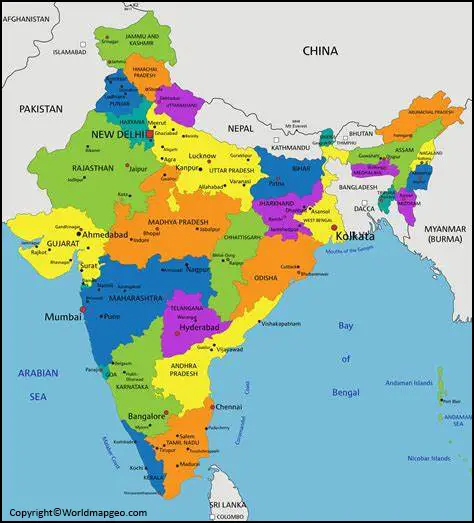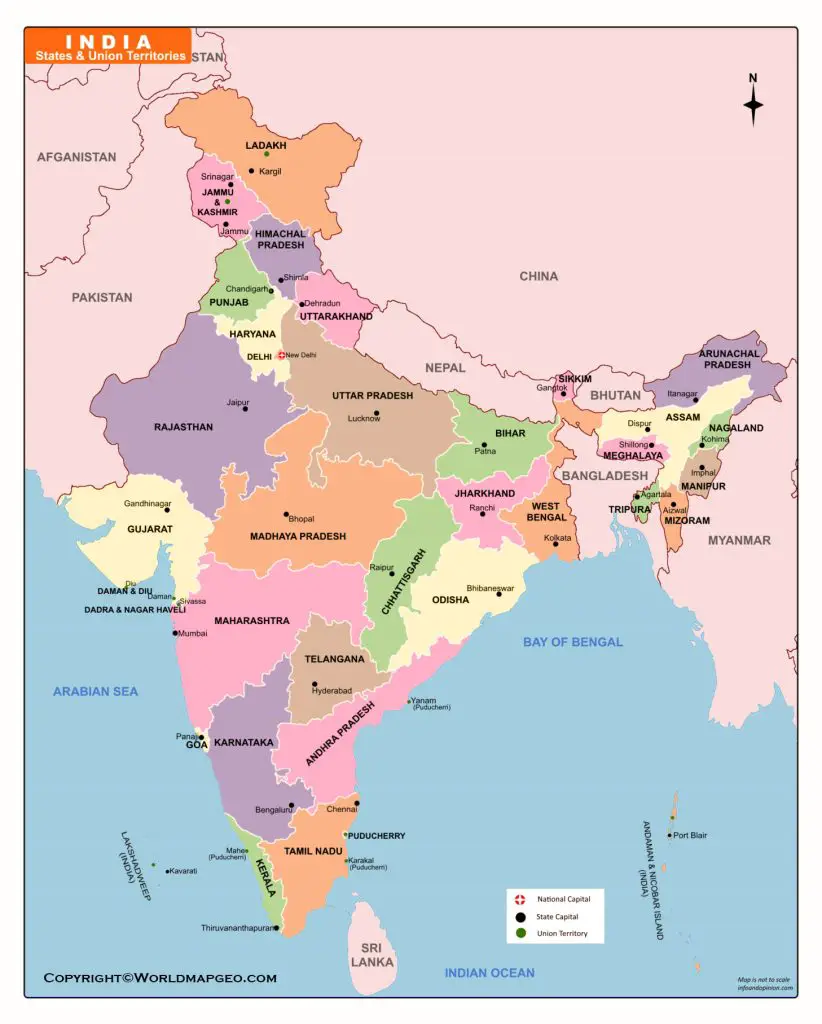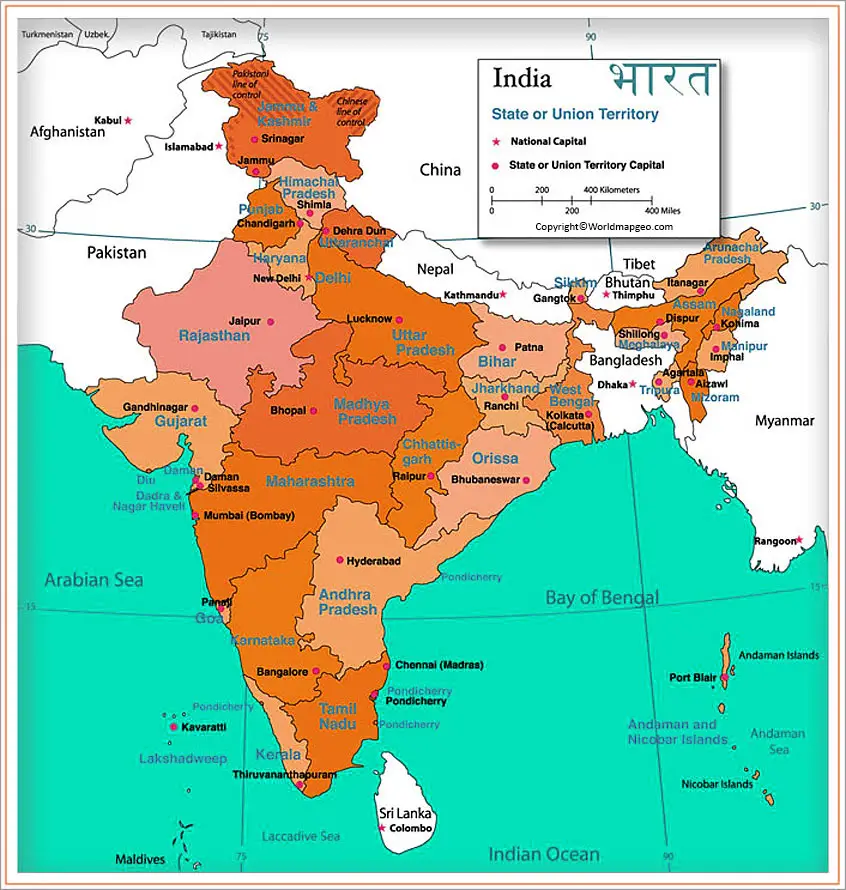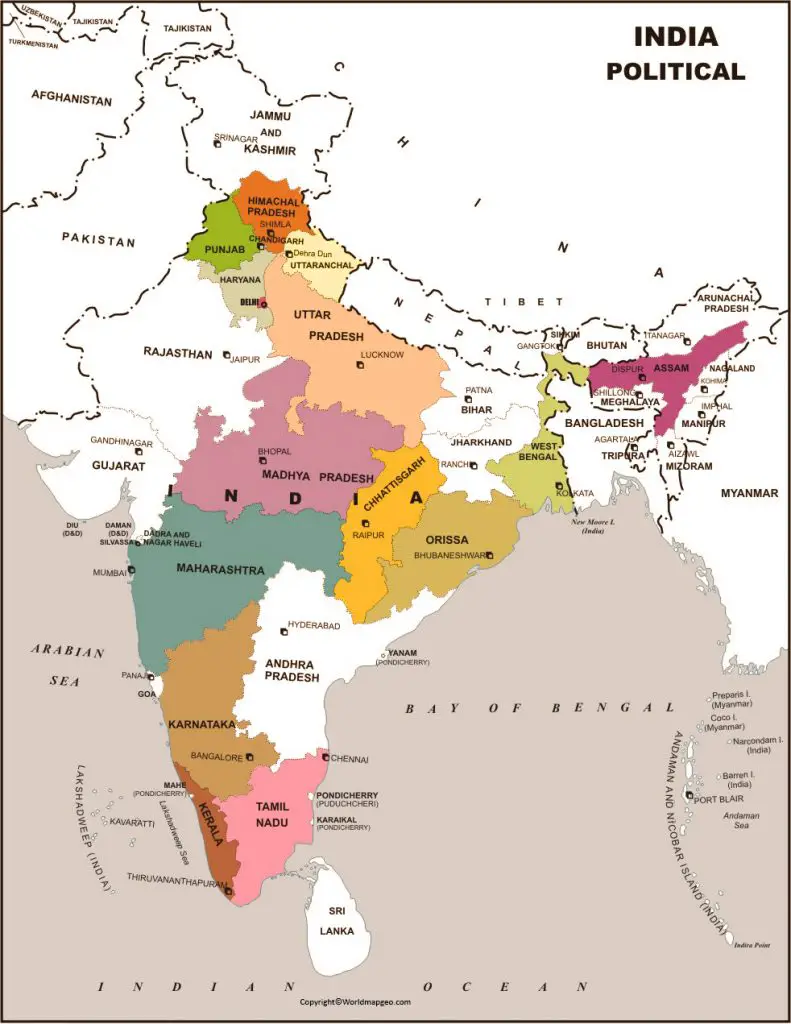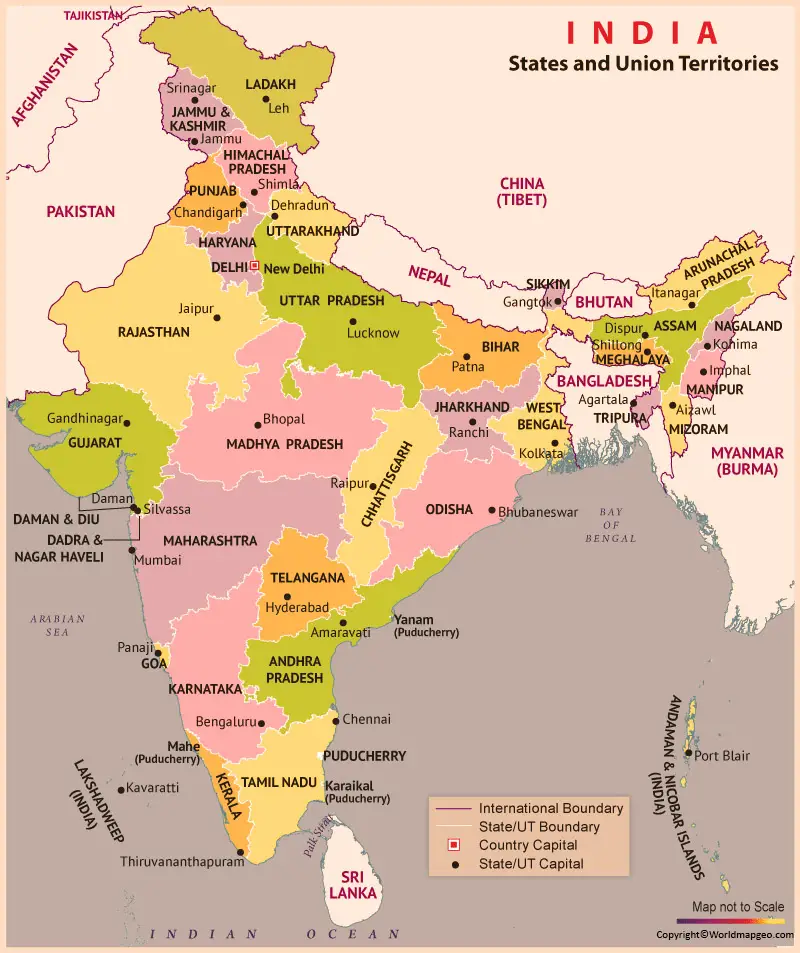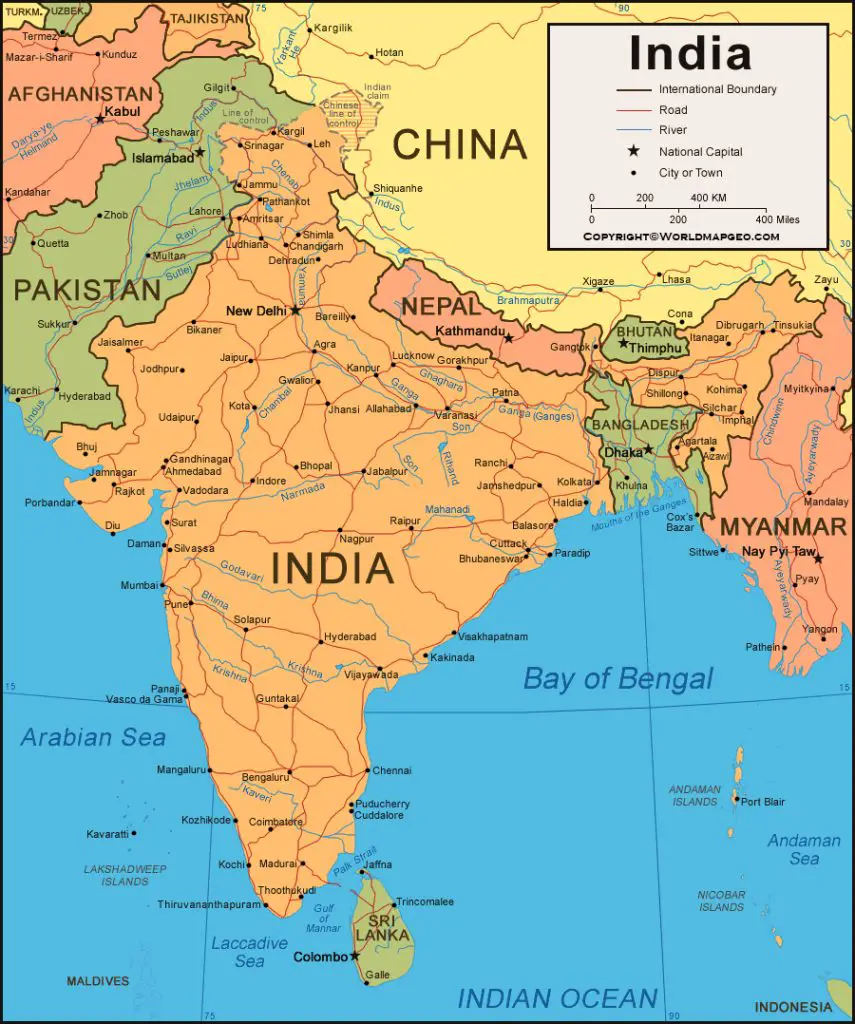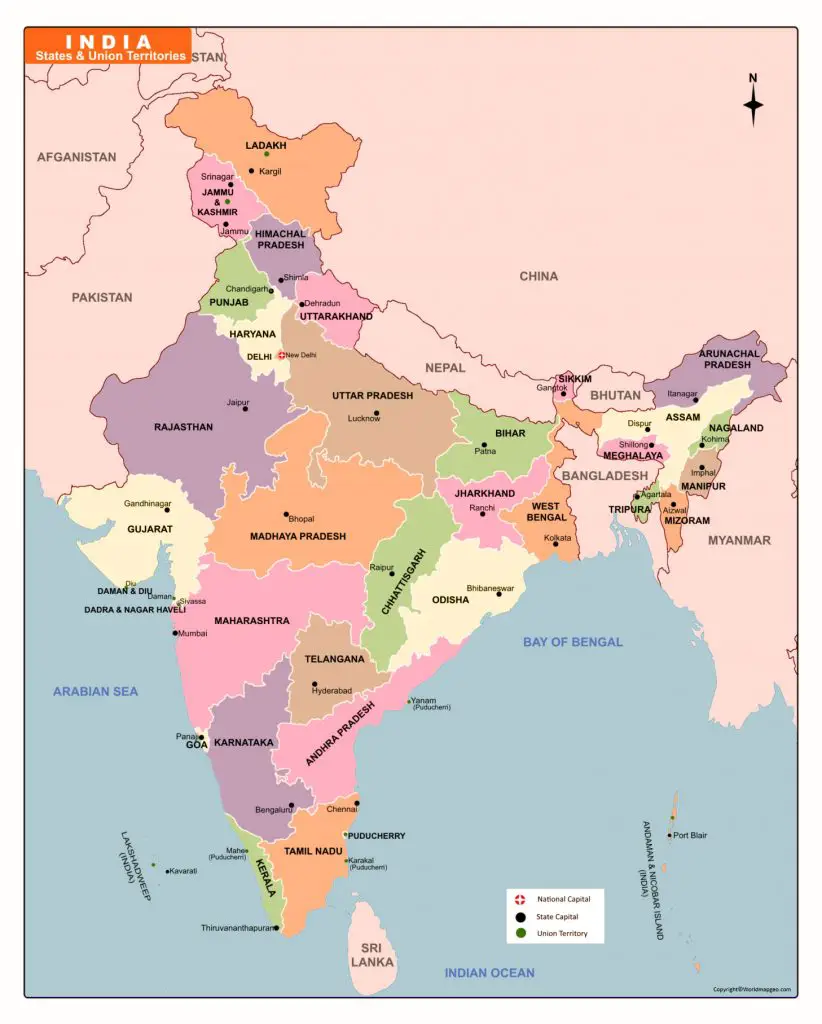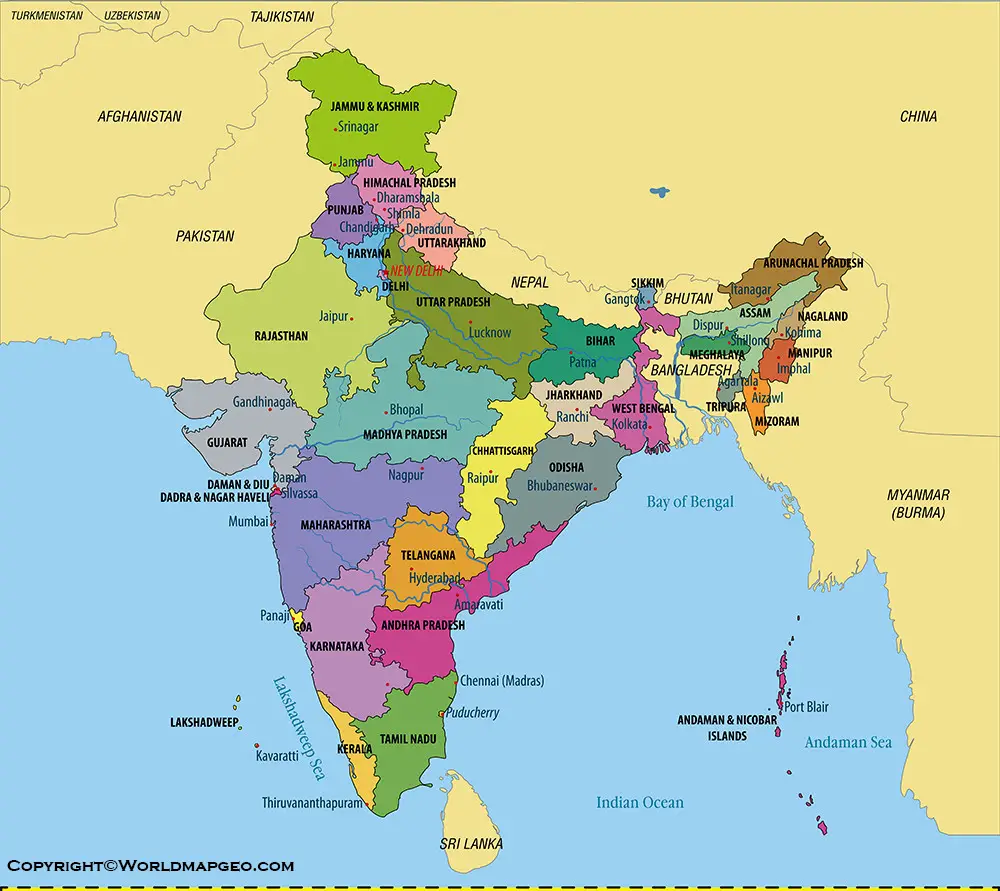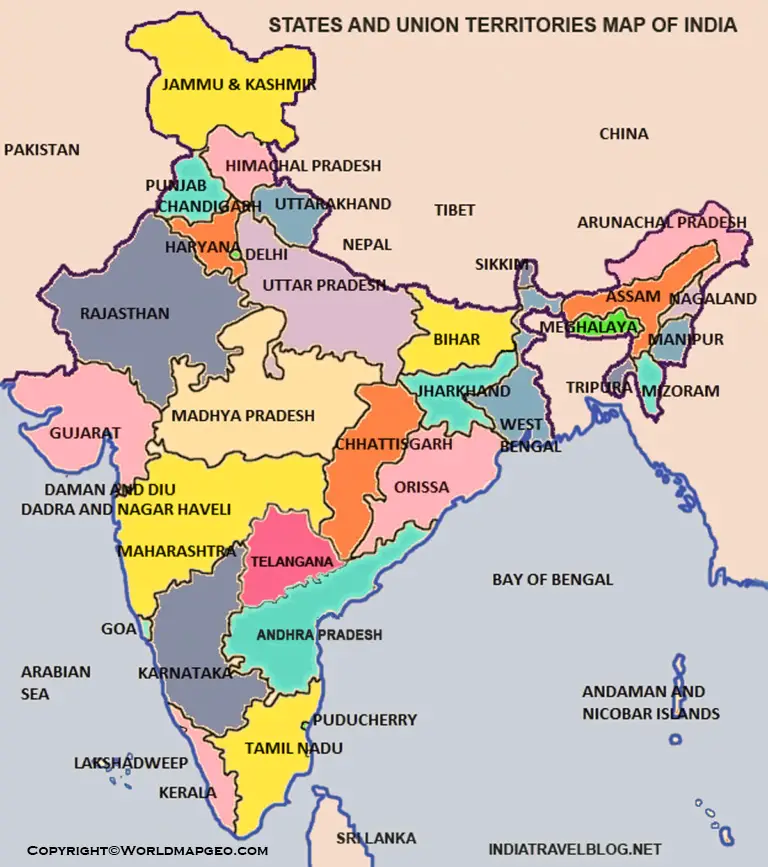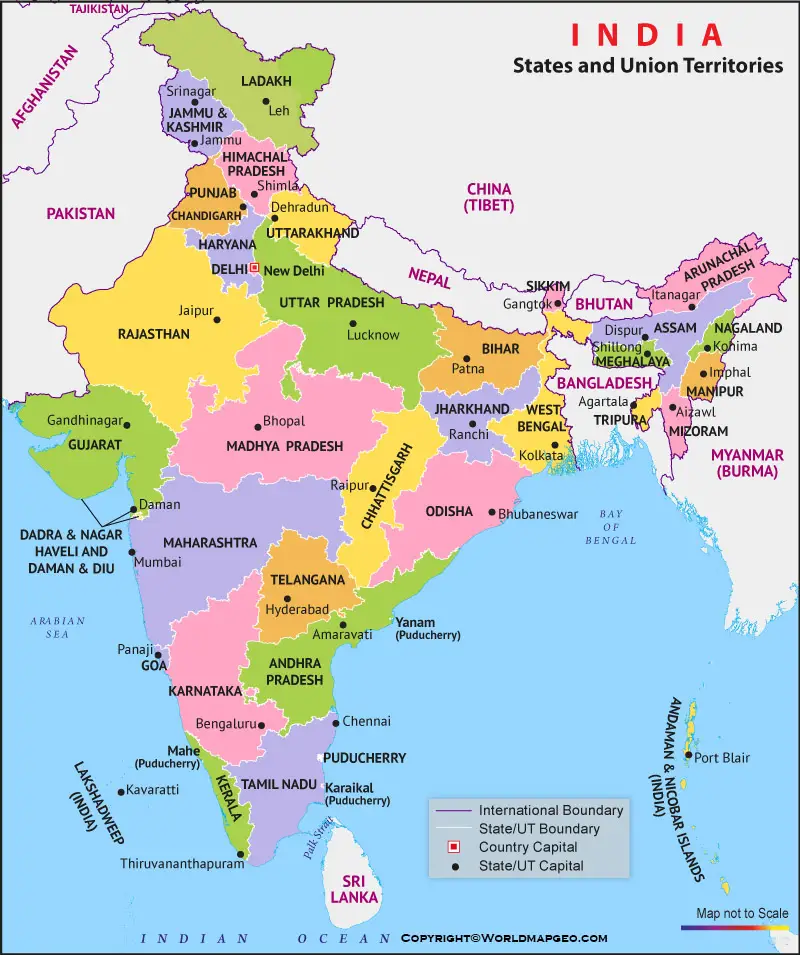India political map can be quite bewildering to newcomers. At over 1,300 miles long and with a population of over 1.3 billion people, the country is vast and complex. The following is a brief guide to the major regions and their respective political affiliations.
India Political Map
The Republic of India (excluding the Andaman and Nicobar Islands) comprises 29 states and 7 union territories. The country is further divided into two major linguistic groups – Hindi-speaking northern India and Tamil-speaking southern India – with minor regional languages also spoken in various parts of the country. The Constitution of India provides for a federal system of government in which power is shared between the central government in New Delhi, the state governments, and local bodies such as municipalities.
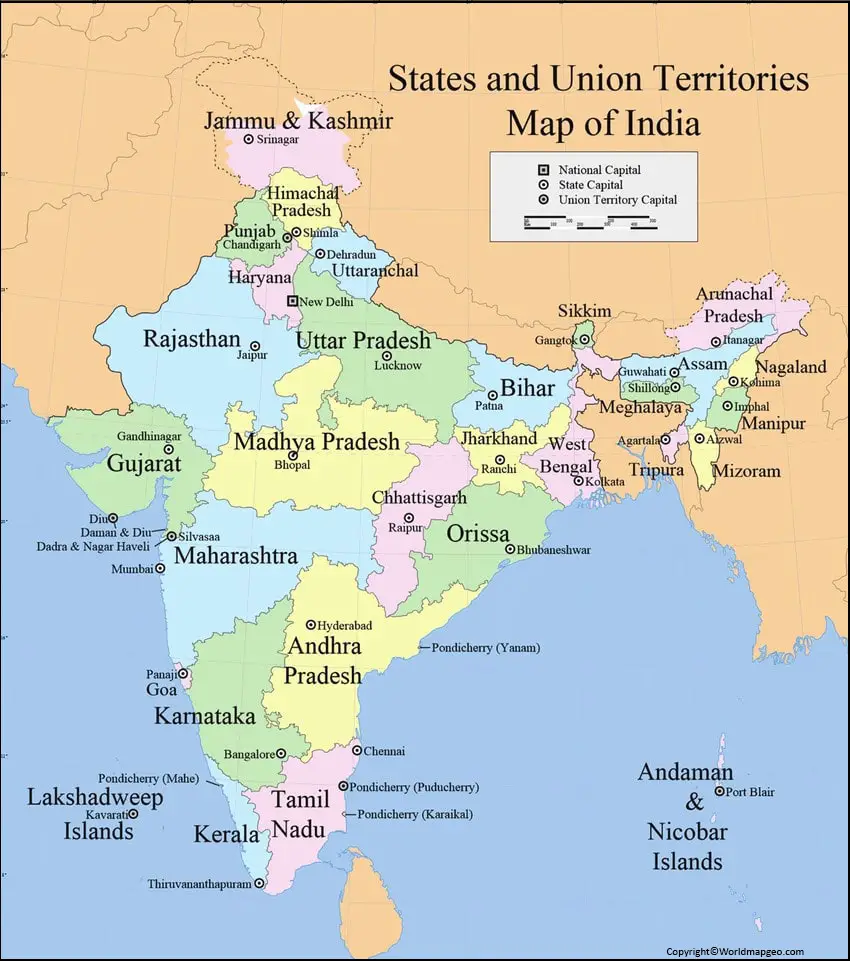
While most Indians are Hindu, Muslims make up around 14 percent of the population while Christians account for around 2 percent. History of Political India
India’s political landscape is incredibly complex, with dozens of regions and languages represented. To help you navigate the maze, we’ve created a map that outlines the major players and their relationships.
1. India is split into 29 states and 7 union territories.
2. The capital city of New Delhi is home to both the federal government and the national parliament, but most power resides with the states.
3. India’s main religions are Hinduism (70%) and Islam (25%), with Christianity accounting for just 1%.
4. Regional identities are strong in India, with various groups vying for dominance in different parts of the country.
5. The economy is dominated by heavy industry and agriculture, but there has been rapid growth in services in recent years too.
Printable Political Map of India
If you are looking for an India Political Map that will help you navigate the complex political landscape of this famously diverse country, then be sure to check out our online map. Our map is interactive and easy to use, making it a great resource for anyone interested in learning more about Indian politics. You can zoom in and out, change the view to a detailed street level map or satellite images, and explore different topics by clicking on icons at the top of the screen.
For example, if you’re curious about regional politics, click on the “States and Territories” icon and watch as our map changes to show you all of the different regions in India. If you’re more interested in national politics, click on “Politics” and explore topics like governance, elections, human rights, economics and more.
India Political Map Detailed
The political map of India is an important tool to understand the dynamics of Indian politics. It also helps in understanding the importance and benefits of different regions in India. The political map of India is divided into 7 regions according to linguistic diversity. Each region has its own importance and benefits which are discussed below:
North-Eastern Region: This region accounts for 22% of the geographical area of India but only 11% of its population. It has a high concentration of tribes and languages, making it one of the most diverse regions in India. The region has been traditionally disadvantaged due to its location and lack of infrastructure. However, with the growth in industries such as information technology, this region is slowly catching up. The North-Eastern Region has a significant presence in defense and security sectors owing to its strategic location.
The last few years have seen a lot of change in India, with the rise of new political parties and the election of a new Prime Minister. This has led to some interesting developments in the Indian political map.
Here are three things that we’ve noticed:
1. The Congress Party is no longer the only major political party in India. There are now several other major parties, including the Bharatiya Janata Party (BJP), which is currently in power.
2. The number of states in India has increased from 22 to 29 since 2013, which is a sign of increasing regionalism in Indian politics.
3. The BJP has been successful at gaining support from rural areas and small towns, while also appealing to urbanites.
Political India refers to the governance, administration, and political landscape of the Republic of India. India is a federal parliamentary democratic country with a multi-party system. Here is an overview of the political system and structure of India:
- Government Structure:
- Executive Branch: The President of India is the head of state, while the Prime Minister is the head of government. The President is elected by an electoral college and acts as a ceremonial figurehead. The Prime Minister is the leader of the ruling party or coalition and holds executive powers.
- Legislative Branch: The Indian Parliament consists of two houses: the Rajya Sabha (Council of States) and the Lok Sabha (House of the People). The Rajya Sabha represents the states and union territories, while the Lok Sabha represents the people through direct elections.
-
- Judicial Branch: The Supreme Court of India is the highest judicial authority. It safeguards the Constitution and has the power of judicial review. The court system also includes High Courts at the state level and subordinate courts.
- Political Parties:
- The Indian political landscape is characterized by a multi-party system. Several national and regional political parties exist, representing diverse interests and ideologies.
- The major political parties include the Indian National Congress (INC), Bharatiya Janata Party (BJP), and various regional parties like the All India Trinamool Congress (AITC), Dravida Munnetra Kazhagam (DMK), and Bahujan Samaj Party (BSP).
- Elections:
- India follows a system of periodic elections to elect representatives at various levels. General elections are held every five years to elect members of the Lok Sabha. State legislative assembly elections are conducted separately in each state and union territory.
- The Election Commission of India oversees the electoral process, ensuring free and fair elections.
- Federal Structure:
- India is a federal country with a division of powers between the central government and the states. The central government handles matters of national importance, such as defense, foreign affairs, and finance. State governments have jurisdiction over areas such as law and order, healthcare, and education.
- India is comprised of 28 states and 8 union territories, each with its own legislative and executive bodies.
- Regional Dynamics:
- India is a diverse country with different linguistic, cultural, and regional identities. Regional political parties play a significant role in representing and addressing the specific needs and aspirations of different regions.
- Issues and Challenges:
- Political India faces various challenges, including economic development, poverty alleviation, social inequalities, regional disparities, and communal tensions. The government works towards addressing these issues through policy measures, welfare programs, and development initiatives.
The political landscape of India is dynamic and constantly evolving. Democracy, political participation, and the rule of law are foundational principles that shape the political system. The diverse nature of Indian society, along with the federal structure and multi-party system, contribute to a vibrant political environment in the country.
